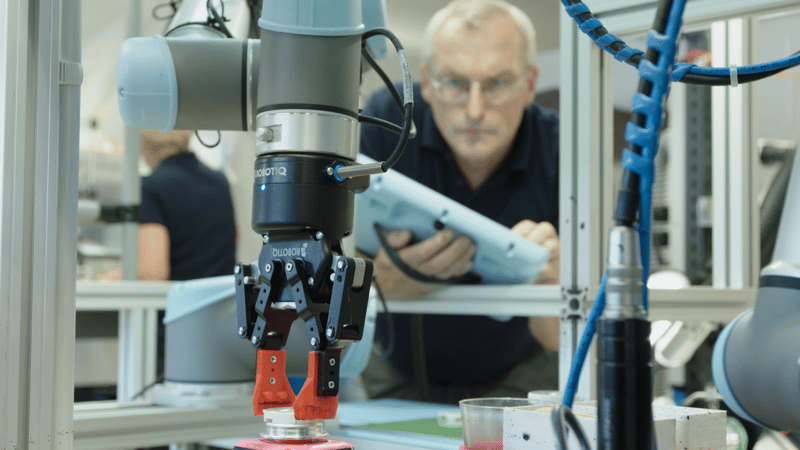Do's and Don'ts for Protecting Your Cobots' Cybersecurity

Posted on Jun 05, 2018 in Collaborative Robots
4 min read time
Collaborative robots – more commonly known as cobots – work near people and help human employees get more done. If one or more cobots malfunctions due to a cybersecurity attack, the consequences could be dangerous and costly.
Fortunately, companies can take action to keep their cobots secure and working as expected.
Companies need to take action to protect their cobots from cybersecurity threats.
1. Do make cybersecurity a priority from the start
Companies must do many things to ensure their IT teams are ready for cobots to be introduced in the workforce.
When discussing plans with IT professionals, business leaders must take a proactive stance and realize it’s never too early to start reducing the cybersecurity risks associated with cobots.
So, while you're busy making substantial decisions such as what brand of cobots to buy and the scope of tasks they’ll perform, it’s also important to think about implementing cybersecurity strategies – and revisit those techniques and tweak them as necessary after you've bought the cobot.
2. Don’t apply blanket strategies to all kinds of robots
Some businesses invest in industrial robots first, then decide to bring collaborative robots into the workplace. Cybersecurity is a necessity for industrial robots. However, you shouldn't assume that because cobots are comparatively newer than industrial robots, hackers won’t target them.
In 2017, researchers from IOActive uncovered 50 vulnerabilities associated with cobots. It’s essential for IT professionals to remain aware of the most pressing cybersecurity threats for cobots and incorporate ways to reduce them.
Merely using the same threat prevention strategies for cobots as industrial robots could prove to be a short-sighted approach.
3. Do consider various scenarios when planning for cyberattacks
Aside from considering vulnerabilities associated with cobots, business leaders must look deeper and use scenarios to illustrate possible outcomes.
This approach will encourage you to see beyond present-day circumstances and potentially highlight hidden challenges or flaws associated with some cybersecurity methods.
4. Don’t overlook the value of company data
One of the primary advantages of cobots is that they feature Wi-Fi-enabled components that transfer data about operations. Company officials can then review that material and make decisions that could affect manufacturing efficiency or labor needs, for example.
All companies that deal with Internet of Things (IoT) devices must take care to secure their manufacturing data. Such information could be particularly appealing to cybercriminals who want to steal proprietary details or compromise business reputations.
A good plan for securing cobots requires an all-encompassing approach to matters like company-wide security policies, user-access privileges, and integrity checks. It’s also crucial to limit the damage of data-specific hacks by encrypting the content.
5. Do purchase from companies committed to cobot security
Research indicates most robot-related cybersecurity issues happen due to a lack of developer awareness. Fortunately, businesses and cobot suppliers realize they must agree on ways to make cobots as safe as possible through proper construction and implementation.
In part, that means limiting the capabilities of cobots, so they cannot engage in tasks that could hurt humans. However, when figuring out ways to do that, engineers should also keep in mind that unexpected things could happen if cobots get hacked.
Finding out which brands show the most care regarding cobot security is an excellent approach to take before purchasing.
If a company that sells cobots goes into great detail about their built-in safeguards, that should make a business feel particularly confident about investing in their products.
It’s also essential that a cobot manufacturer release security patches as needed to tackle new vulnerabilities.
6. Don’t ignore feedback from employees
The people who actually use cobots may be the first to realize there’s a cobot-related cybersecurity incident. Employees should be trained in the proper actions to take when a cobot behaves strangely.
Company leaders must urge workers to report even seemingly minor issues, such as a cobot that took longer than usual to start up at the beginning of a shift.
Although it’s essential to get ongoing feedback from IT team members, the employees who work directly with the cobots may be the most likely to notice things others miss.
Cybersecurity awareness reduces risks
Companies cannot assume cobots are immune to cybersecurity problems. Even if businesses never directly experience a hack, awareness is always better than ignorance.








Leave a comment